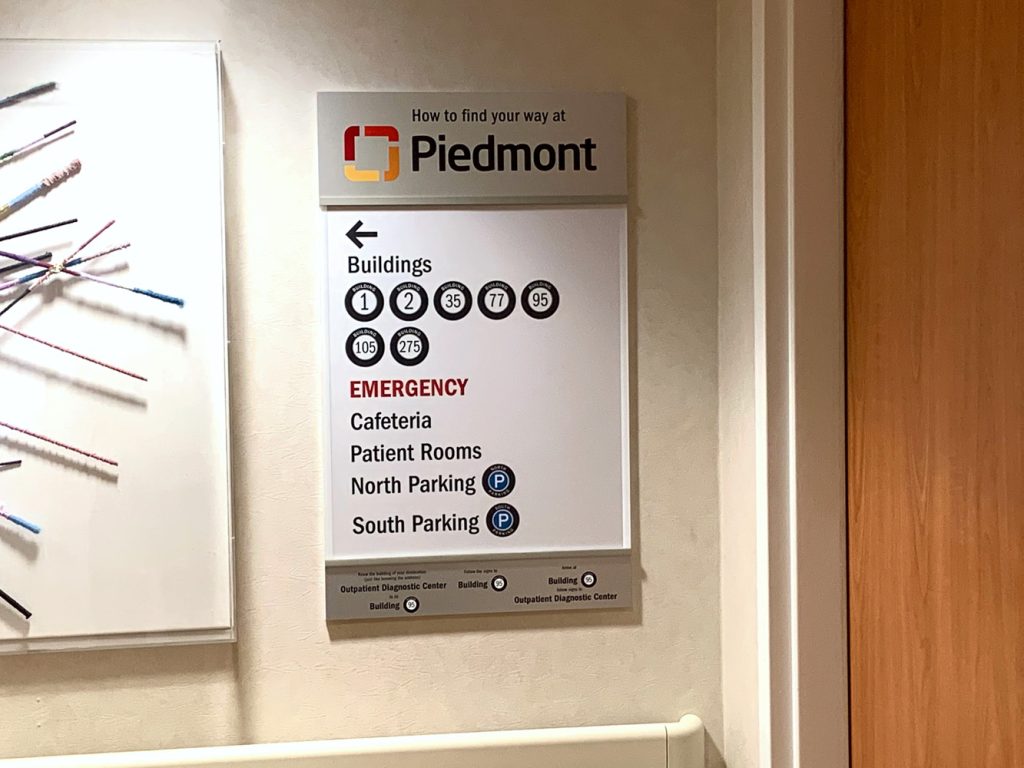In the world of healthcare design, the importance of wayfinding systems can hardly be overstated. The latest signage installed at Piedmont Healthcare is a testament to the facility’s commitment to patient and visitor experience, merging functionality with intuitive design. Our feature article in “Healthcare Navigation Today” delves into the details of this system.
At Piedmont, navigating the extensive facilities has been made significantly more user-friendly with the introduction of a new wayfinding sign. Placed prominently within the interior space, the sign bears the clear instruction “How to find your way at Piedmont,” followed by a straightforward map of services and destinations. This approach is not merely directional but reassuring, a quality that is of paramount importance in healthcare settings.
The sign itself is a study in effective communication. The Piedmont logo anchors the design, immediately recognizable in its red and yellow colors, signaling trust and attention to those seeking guidance. Beneath it, large, bold text points visitors to various buildings, each number encircled and color-coded, suggesting a thoughtful zoning system within the complex.
The “EMERGENCY” designation stands out in stark capital letters, a critical signpost for urgent situations. The list of destinations that follows — including the cafeteria, patient rooms, and parking areas — is complemented by universally recognized icons, offering a dual-language of text and imagery that can be understood at a glance.
This article examines the sign’s strategic placement within the facility, its typography, color choices, and iconography. We discuss the impact of such design decisions on visitor stress levels and the overall efficiency of movement within the hospital.
Through interviews with the design team at Piedmont Healthcare and feedback from facility users, we gain insight into the iterative process that led to the sign’s final design. We explore the challenges faced in creating a wayfinding system that is accessible to all, regardless of language, culture, or cognitive ability.
Our coverage extends to a broader discussion about the role of wayfinding in healthcare environments, the psychological impact of good design on patient well-being, and the future of digital integration in navigational aids.

